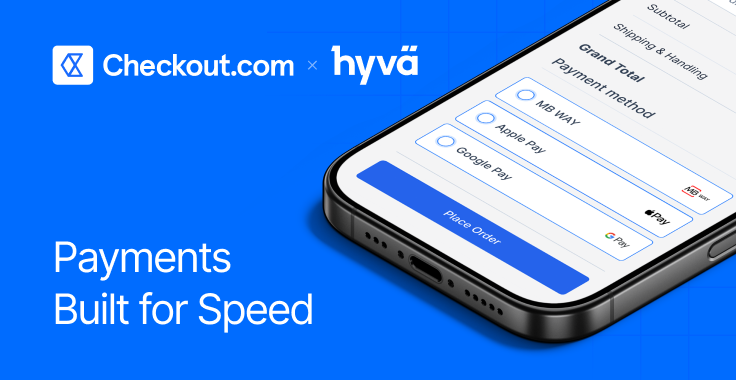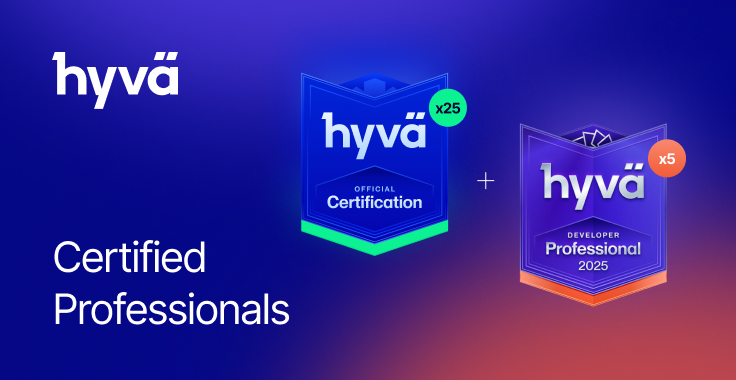Nowadays, smartphones play a huge part in our daily lives. Instinctive social media checks at least several times a day have become a habit for most of us. Back then, companies could only reach mobile users by launching a native mobile application. At the same time, PWA technology has become a powerful alternative for companies of any size to engage with their active mobile audience.
This article series will demonstrate the difference between native and progressive web applications. We will also determine when your company should stick to PWAs, and when a mobile application could be the better option.
Definitions – PWA and Native application
PWAs work as websites but provide an almost whole native mobile app experience. For example, application users can receive push notifications, work offline, or look up responsive pages. With this in mind, even if you do not have a native application but need to reach mobile users, it does not matter whether they have a poor Internet connection or not have it.
Here is how Google defines the advantages of PWAs for both business owners and the end-users:
- Improving conversion: Fast-loading pages prevent users from giving up the application. Also, they help customers quickly find what they want.
- Increasing engagement: Push notifications instantly alert users on new content.
- Working reliably: Due to pre-caching, progressive web apps work even without an Internet connection.

What about their competitors? What do we mean by a native application? First, developers create native applications for portable devices (smartphones or tablets). Then, users install them directly on their gadgets.
You may primarily find native applications on the official marketplaces such as Google Play (primarily for Android) or App Store (Apple environment).

Now that we know the primary attributes of PWAs and native applications, we can argue that these solutions help brands engage with their mobile users. First, however, here comes an interesting question. Why do mobile users matter so much? Let's reference some statistical data which shows the evolution of global mobile data consumption between Q1 2014 and Q2 2020.
Detailed comparison
The next thing on our list is finding the available PWA and native application pros and cons, including similarities and differences between these application types. Finally, we will contrast a PWA and a native application creation process, user engagement, and other essential aspects.
1. Application set-up and rollout to the market
Developing one native mobile application for either Android or iOS ideally requires two dedicated teams, 1 per system. Mind it will still take much longer to ensure the functionality is operable for both, even if developers create them simultaneously, which means considerable time and costs are required to develop a native application.
Developing one native mobile application for either Android or iOS ideally requires two dedicated teams, 1 per system. Mind it will still take much longer to ensure the functionality is operable for both, even if developers create them simultaneously, which means considerable time and costs are required to develop a native application. Droids on Roid statistics indicates how the price per 1 operating system may vary based on it's complexity:
- Basic application: $25,000 – $50,000
- Medium-complexity application: $50,000 – $100,000
- Complex application: $100,000+
Submitting and approving through stores (App Store and Google Play) is a separate part of the native mobile app launch. First, the product must undergo a verification downtime, which usually takes time. For Google Play, for instance, it can take several hours, while for App Store, it can take up to 2 days which delays rolling out your application on the market.
The process of the PWA set-up and launch in turn goes faster for two reasons:
- A PWA is still a website. You only require one web developer to build and deploy PWAs. This team will also deal with workers, performance and other tools that would contribute to the UX improvement. As a result, your product shall launch much faster.
- The store validation is not required at all, as you are well... building a website, so you do not need to submit your application or wait for the approval. The PWA is ready to use once it is built and published on the Web.
It is now fair to sum up, that PWA set-up and launch is more cost and time-effective, as it is both more expensive and resourceful to develop the native application and submit it to App Store or Google Play.
2. Installation
There is a set of actions the end-users shall do to install the native application:
- Find your application among all those millions of apps if not referred to through some advertising campaigns, or you are not a well-known brand
- Download and install it (waiting patiently if the connection is slow or the app is big).
Those are natural yet really dangerous steps, during which you may lose your customer at any time. Meanwhile, to install PWAs, all you have to do is:
- Find your PWA through the browser
- Open up settings and press the “Add to the home screen”. In some cases both Android and iOS users will have to use the “Add to home screen” option in a browser menu.
This will add your ready-to-use PWA to the home screen of your device. This way, companies can increase their customer base by covering both mobile and desktop users.
PWA set-up requirements
It is worth understanding that during the selective process, the list of utilized technologies must cover the business needs and requirements. It is the right decision to start PWA if you have an eCommerce platform and you want to re-engage customers. Choosing PWA for such domains as a marketplace, media, or a small but growing business is also a good practice.
At the same time, if you have a very complex product to roll out, like a banking application (like Lloyds or Barclays), social or dating platforms (Tinder or Facebook), which will need all the native experience across the board, you would better build a native mobile application. You should consider all your requirements and resources, both time and funds, before making the final decision:
- Who is the target audience?
- How many months are you ready to spend on building the application?
- What is the budget for development?
To conclude, let’s sum up all the PWA vs native pros and cons to see which one will be a better choice for your business.
Offline functionality:
- PWAs: Available but limited only to the data that has been cached while online.
- Native: Some apps can work with no connection, while some don’t. Some have limited offline functionality.
Installation:
- PWAs: Available but limited only to the data that has been cached while online.
- Native: Some apps can work with no connection, while some don’t. Some have limited offline functionality.
Installation:
- PWAs: User needs to open the progressive website, click the button “Add to Home screen”, and the PWA shortcut will be quickly and easily added. The PWA is not downloaded to the device.
- Native: User needs to find the app in the store and install it, after multiple stages, sometimes sign-in is required. The app is downloaded and installed on the device.
User engagement:
- PWAs: Available with push notifications on Android devices only.
- Native: Offer great user engagement, including push notifications. It can be limited by the user’s settings.
Access to device features:
- PWAs: Access is limited to certain features only. More possibilities for Android devices than for iOS.
- Native: Full access to device features.
App promotion:
- PWAs: Being a website, not listed in stores. Indexed by Google, can rank higher due to the mobile-first indexation policy.
- Native: Listed on Google/Apple stores. For better discoverability needs additional promotion.
Inter-app communication (i.e. sign in with Instagram account):
- PWAs: Not available upon implemented through some 3rd party service (Firebase or AWS)
- Native: Available
Data consumption:
- PWAs: Since the file size of a progressive web app is small, it does not require a lot of data.
- Native: Some mobile apps can be large in size and require a lot of traffic for constant data exchange.
Updates:
- PWAs: Updates are performed automatically, so users don’t need to update the app (if the cache version change set by the developers).
- Native: Updates should be installed additionally. Each update should comply with the store requirements.
Launch to the market:
- PWAs: Quicker to create and launch due to only one version required, no stores bureaucracy involved.
- Native: Takes longer to create and launch, because there’s a need to create two versions and wait for store verification.
User interface and user experience:
- PWAs: While still being a website, a PWA look is very close to that of a native app and very adaptive to any device.
- Native: Mobile apps are famous for their great user experience, as they are created for particular platforms with original UI components.
Multi platform availability:
- PWAs: Only one version is created, which works for both iOS and Android.
- Native: You need to create a separate solution for each OS.
Cost / time required for development and support:
- PWAs: Less expensive and quicker to develop and support. No dependence on new OS versions.
- Native: Requires more time and costs to create and further support each new app version for iOS and Android platforms.
In this first part of the series, we made a small look into differences between PWA and native apps. As you can see, both technical solutions have advantages and disadvantages.
In the upcoming Part Two we shall discuss the Device features like NFC, or the Ambient light access, vibration and the battery information access, as will discuss personal experience in developing both application types, and requirements. Stay tuned!

















